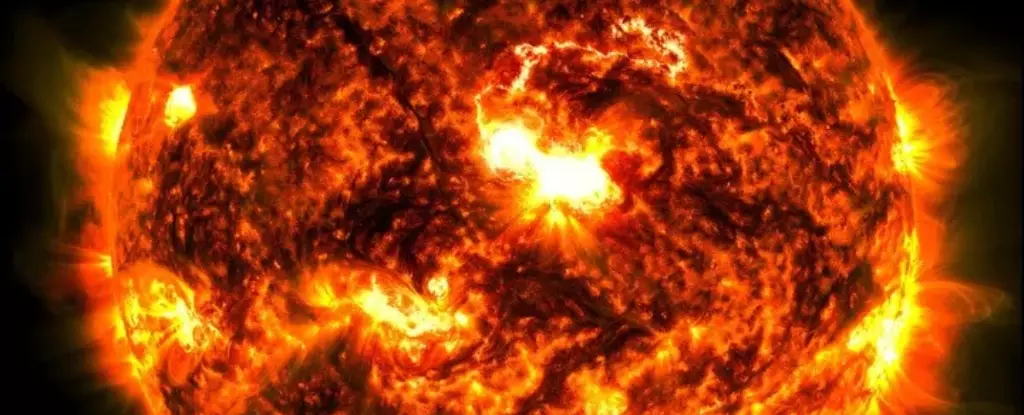In an exciting intersection of astronomy and environmental science, a significant event is on the horizon: a coronal mass ejection (CME) from the Sun is anticipated to hit Earth soon. US meteorologists are alerting the public that this massive eruption of plasma, accompanied by an intense magnetic field, could arrive as early as Thursday morning. The forecast suggests that this solar phenomenon may ignite stunning auroras, with the possibility of witnessing these natural light displays extending as far south as Alabama. This CME event is part of the solar cycle, which has reached a peak phase characterized by increased solar activity—something that the scientific community has been closely monitoring.
Coronal mass ejections are immense bursts of solar wind and magnetic fields rising above the solar corona or being released into space. On occasions, these phenomena can interact with Earth’s magnetosphere, leading to geomagnetic storms. Indeed, recent history shows that during periods of elevated solar activity, including a particularly intense geomagnetic storm in May 2024, striking displays of auroras have occurred well beyond traditional viewing areas near the poles. These spectacular colors can fill the night sky, attracting enthusiasts and photographers eager to capture the moment.
Shawn Dahl from the Space Weather Prediction Center has conveyed that the current CME is expected to travel at phenomenal speeds—around 2.5 million miles per hour—bringing it dangerously close to breaching Earth’s magnetic defenses. The forecasted arrival time, stated to be from early morning to midday Eastern Time, raises questions about the subsequent effects this surge could have on Earth’s technology.
CME impacts are not limited to aesthetic pleasures; they can also trigger significant disruptions in technological systems. The level of geomagnetic activity resulting from such a solar storm can affect satellite operations, GPS systems, and even electrical grids. During the infamous “Halloween Storms” of 2003, for instance, extensive blackouts occurred in Sweden, while South Africa faced serious infrastructural damage. While more recent storms did not lead to large-scale chaos, they did cause temporary disruptions, such as GPS errors experienced by farmers in the Midwest, requiring swift corrective measures for around 5,000 satellites affected by the increase in ionospheric activity.
To mitigate risks, Dahl noted that the Federal Emergency Management Agency (FEMA), currently managing multiple crises including the aftermath of Hurricane Helene and the arrival of Hurricane Milton, has been briefed on the anticipated solar storm. Coordinating with energy companies operating the North American power grid is crucial for anticipating and addressing potential electrical disturbances.
For those fortunate enough to reside in areas where the auroras may be visible, anticipation grows. The ideal conditions for witnessing these celestial displays will be absence from city lights and finding the darkest vantage points available. The electric hues typically associated with auroras, including greens, pinks, and even reds, can be elusive, but they are made more attainable with modern technology. Digital cameras and smartphones have the capability to capture these stunning phenomena, even when the human eye cannot fully perceive them amidst the surrounding darkness.
As we await this astronomical event, it is essential to remember that these solar outbursts serve as a reminder of our place in the universe. While CMEs pose certain risks, they also offer us an opportunity to engage with the grandeur of nature on a cosmic scale. As scientists strive to enhance predictive models, the balance between respecting the power of solar activity and embracing its beauty remains a fascinating part of our relationship with the cosmos.
As we look forward to the potential displays of the auroras, let us also appreciate the delicate interaction between solar dynamics and technological resilience. Whether you are an astronomy aficionado or simply a citizen marveling at the wonders of our universe, this event is set to be a captivating moment—one that may well forge connections between nature, science, and humanity.


Leave a Reply